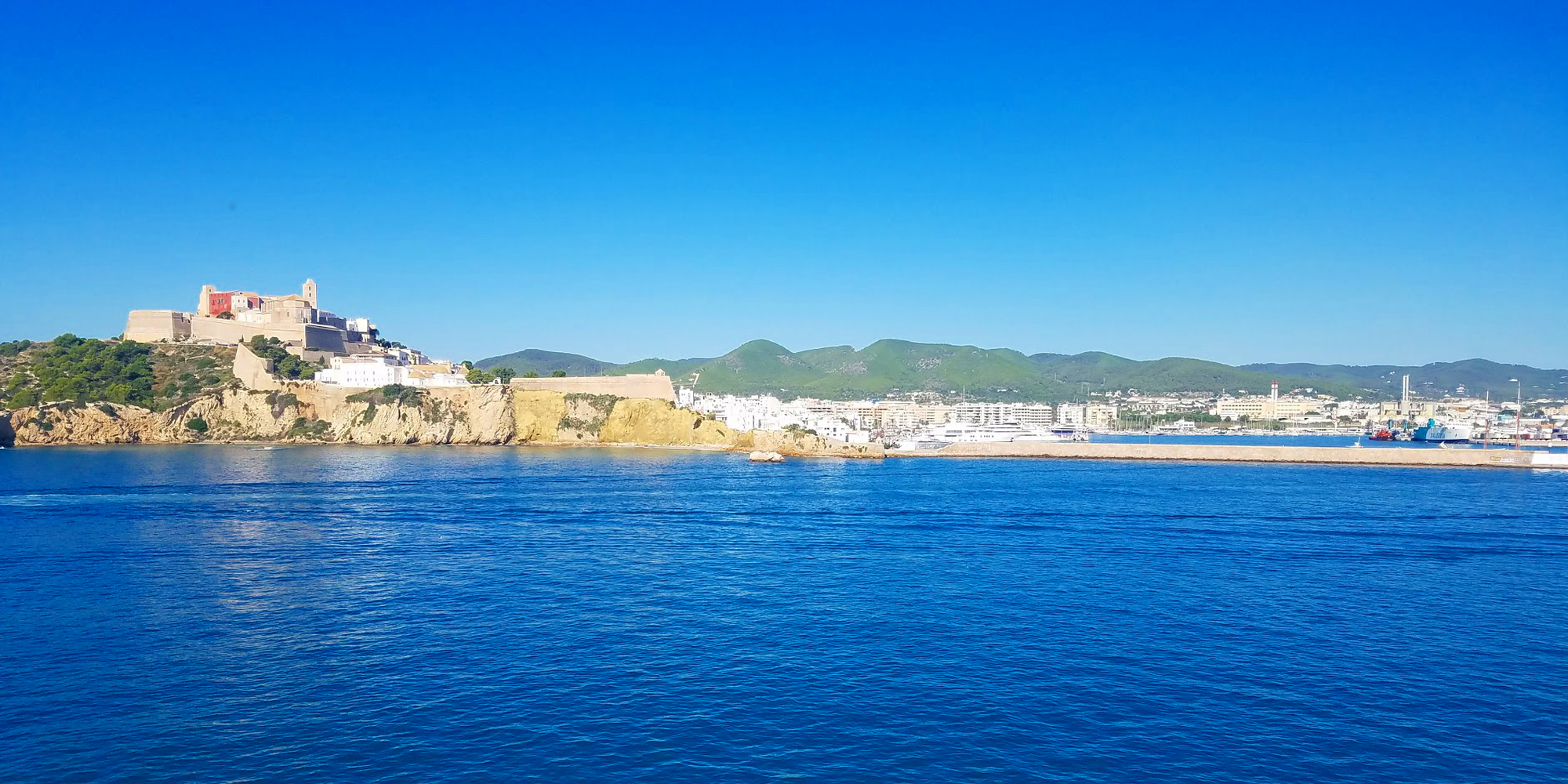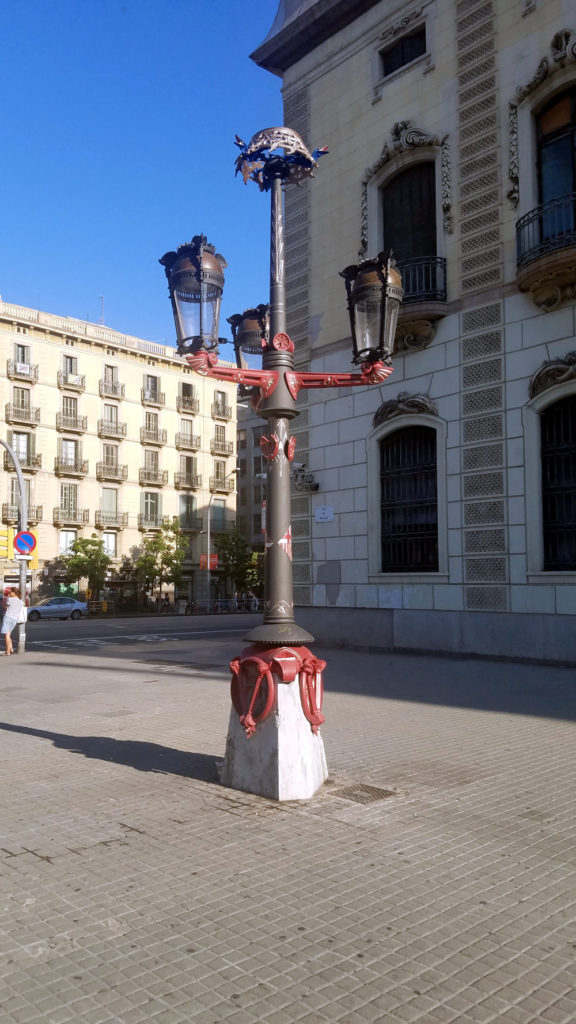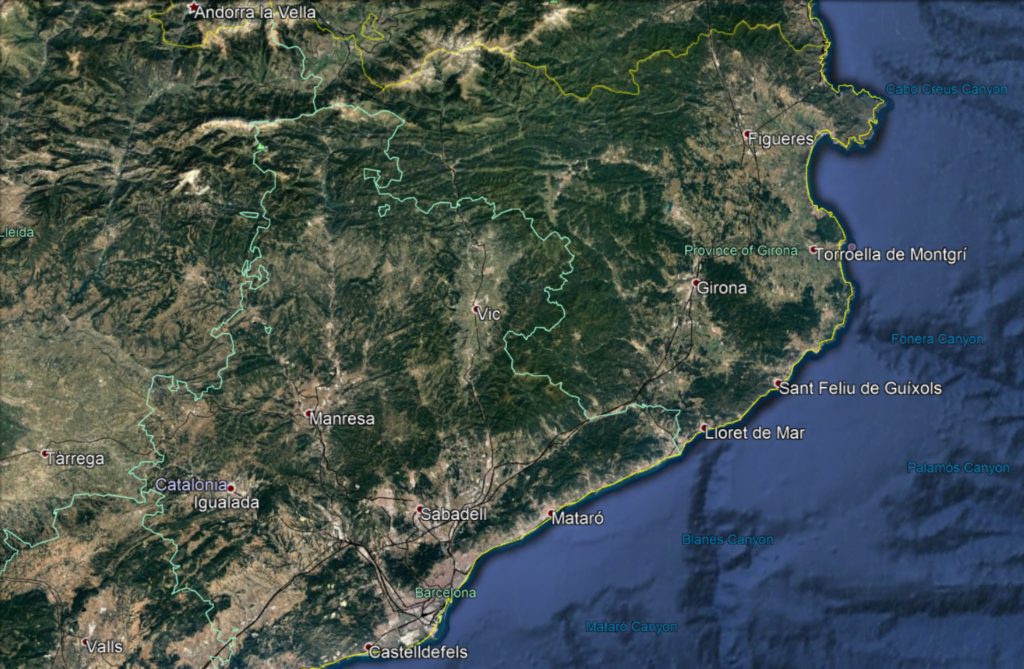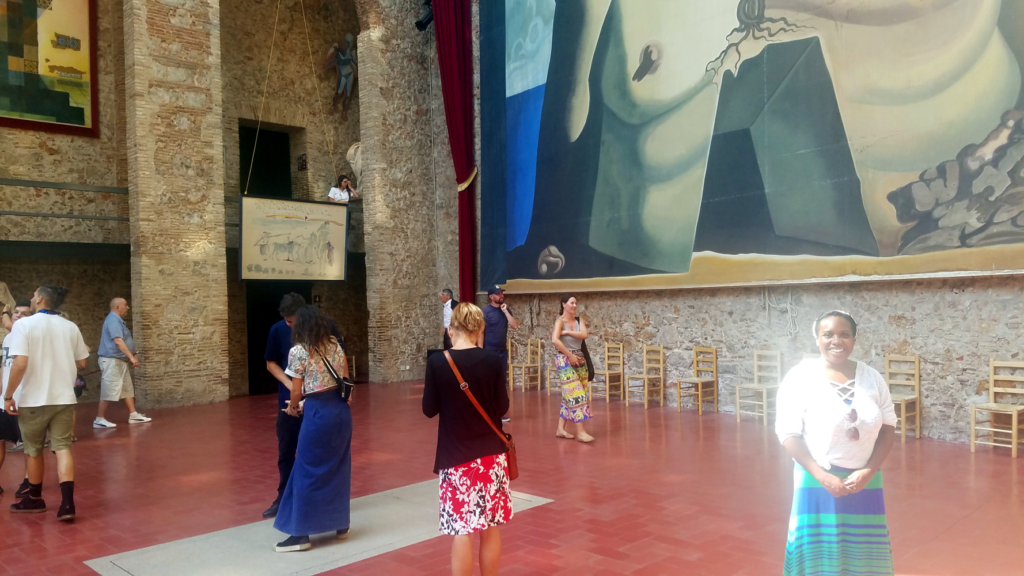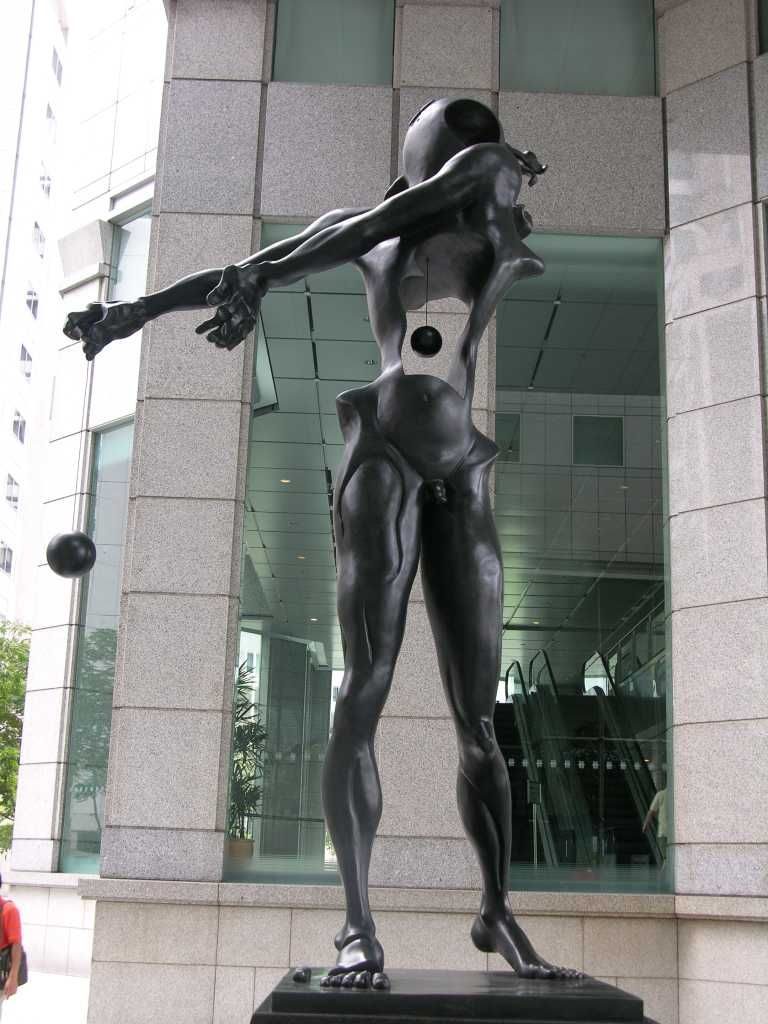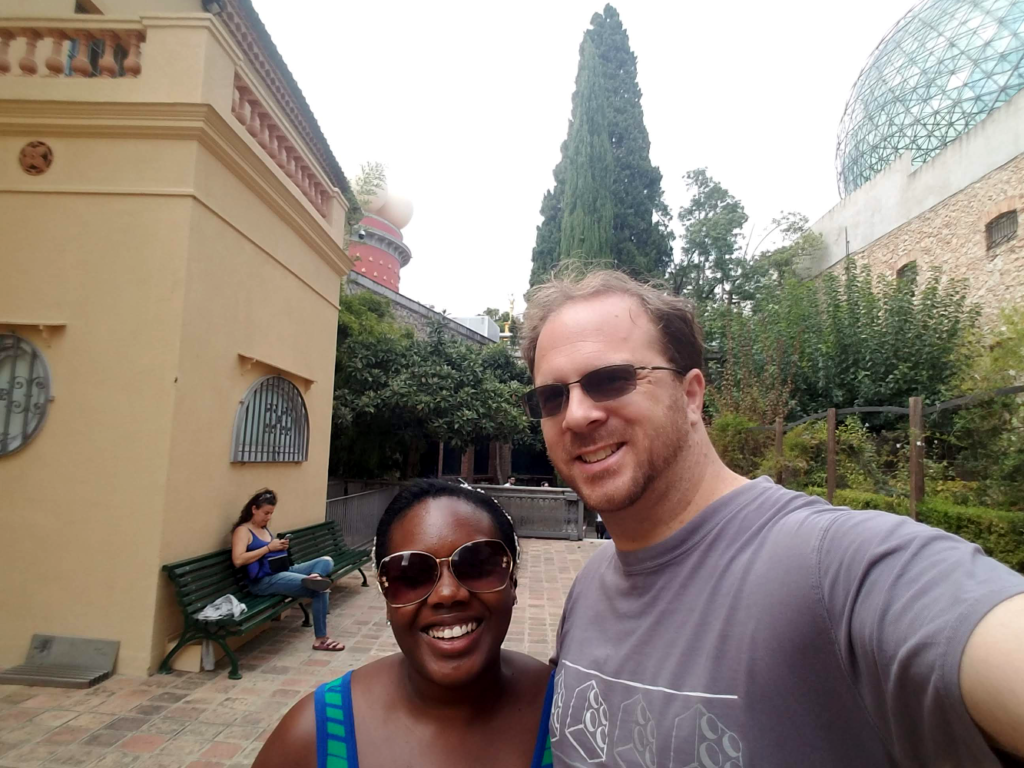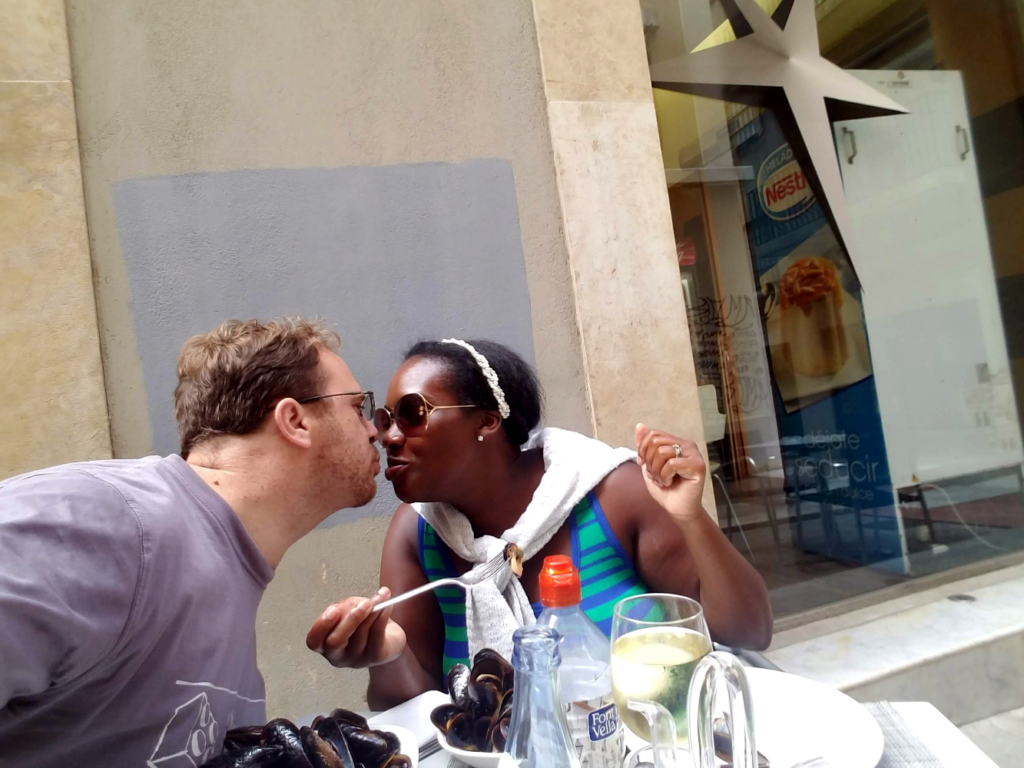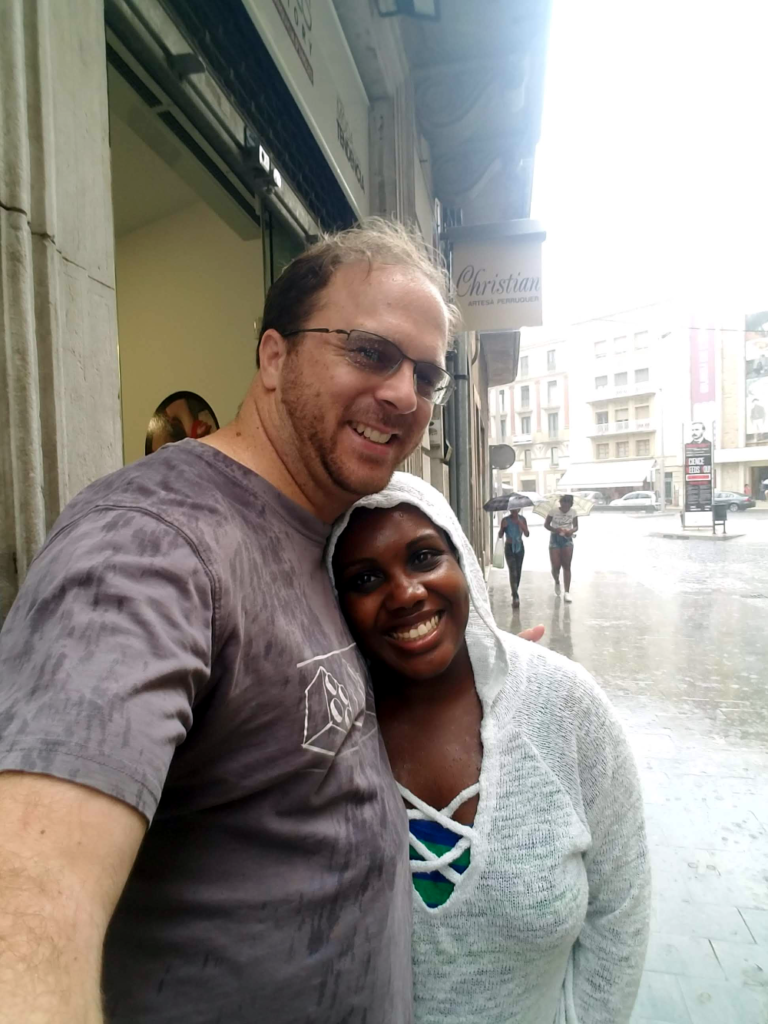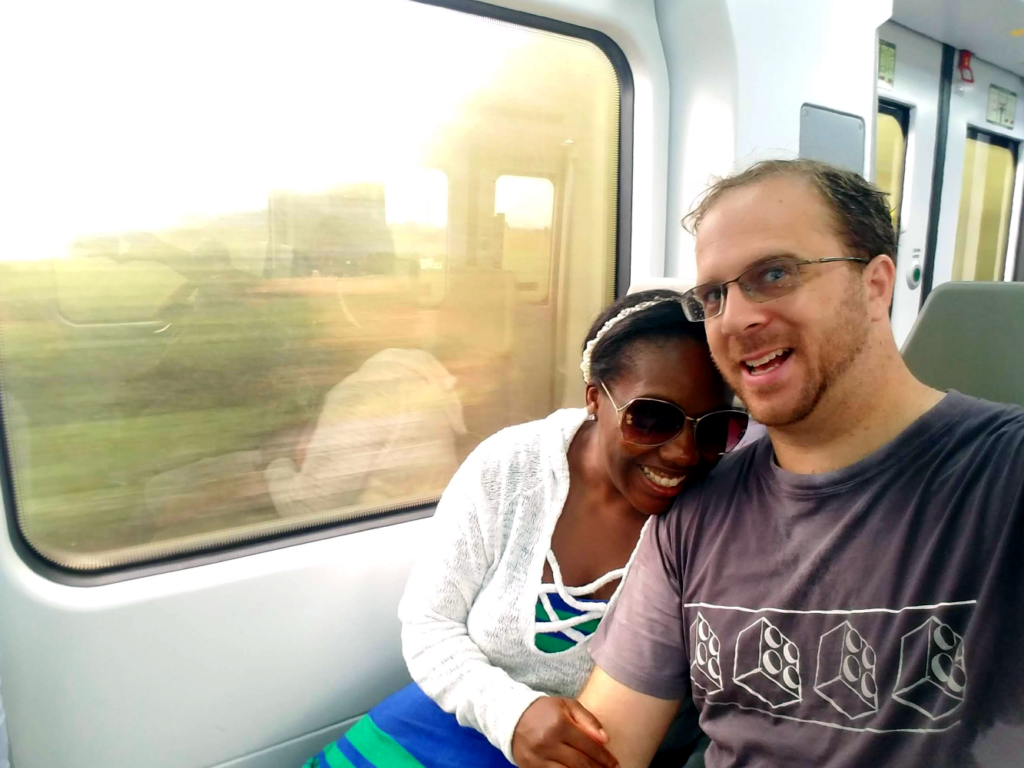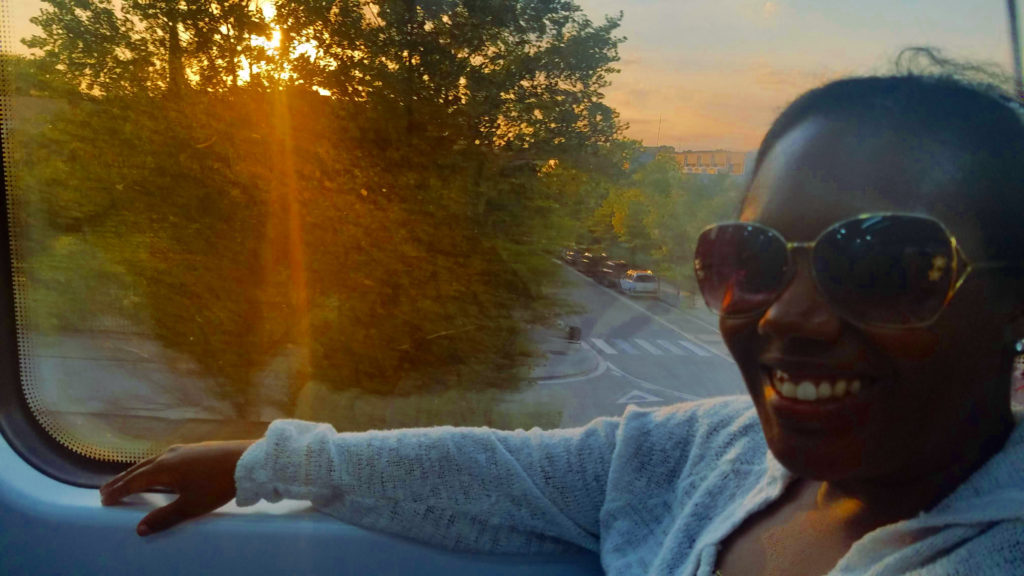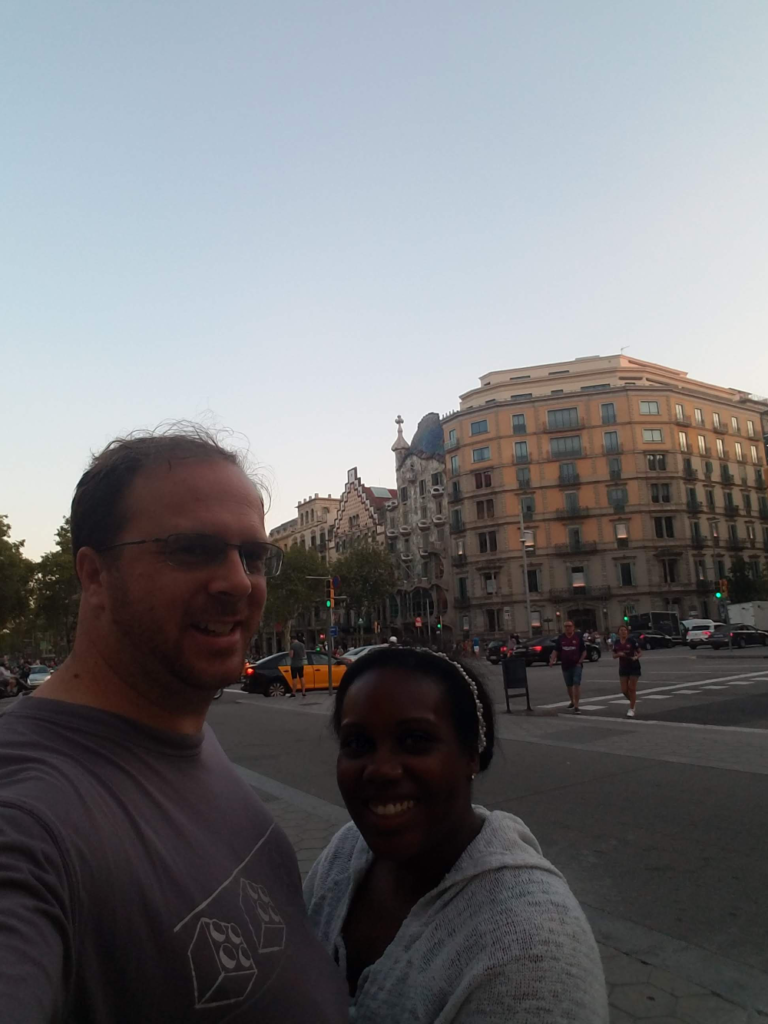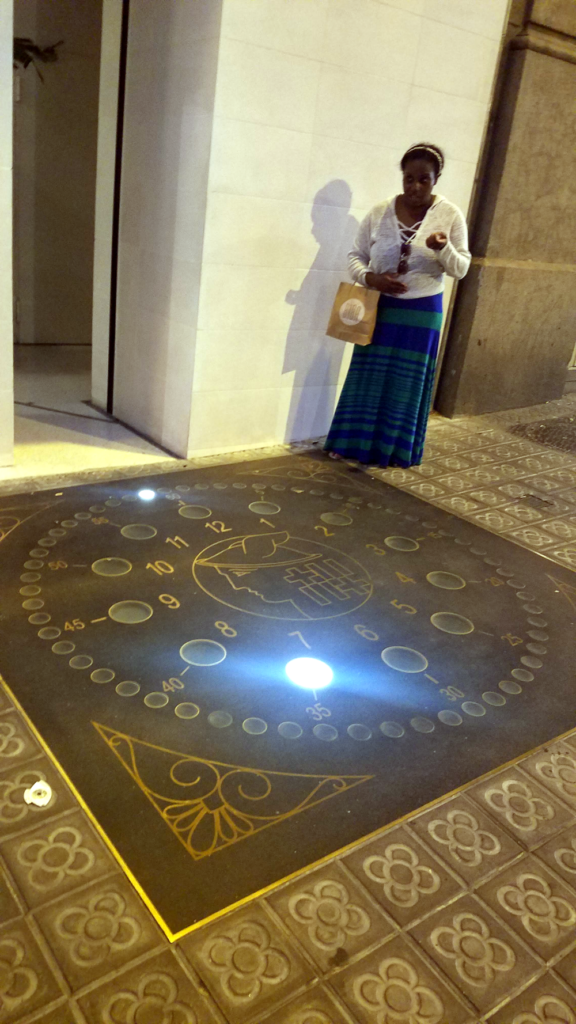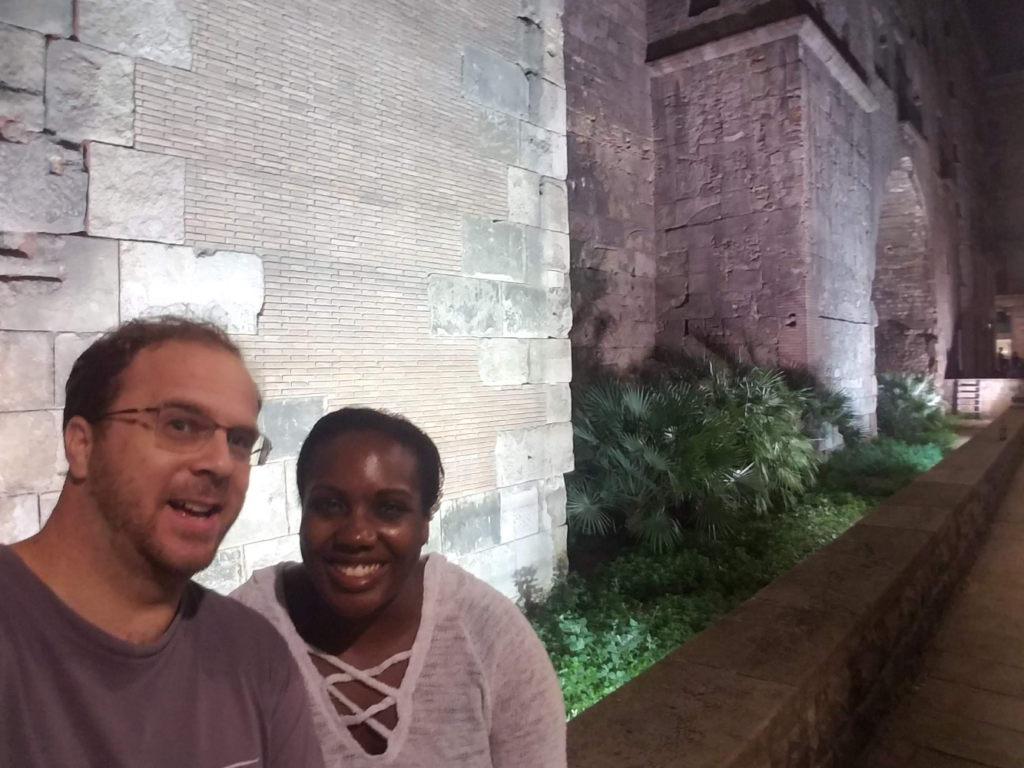We had so many choices for things to do in Barcelona, and I knew there was no way we’d be able to cover a significant amount with only two full days. One of the most exciting opportunities for me, though, was a day-trip to Figueres, a small town about two hours north that hosts the official Salvador Dali museum–designed by the man himself as his greatest work to host all his others. I nearly decided not to go, so we could spend the day covering more local sites. I’m glad Mercy convinced me otherwise, though. This turned out to be a once-in-a-lifetime experience.
I’ll start the photo experience with one of the most unique lanterns I’ve ever seen. We stumbled across this gem while walking our way to Estacio de Franca, the main train station in our part of town. Have you ever seen its like? I certainly haven’t.
From the station, we caught a regional train up to the small town of Figueres.
Can we talk about Dali for a moment? I knew *about* him, of course, but it wasn’t until I starting reading more about turn-of-century art movements in general. and the artist himself in particular, that I learned just how utterly fascinating he (and his artwork) really was. Just browse his WikiQuote page.
The story of Figueres is particularly interesting. Dali grew up in the town, had his first art exhibit in the town theater, and was baptized in the church next door. After the Spanish civil war destroyed the theater, he approached the mayor and offered to rebuild it as his own museum. As Rick Steves described, “the money’s been flowing in [to the town] ever since.”
Surrealism itself is… something that, in its most authentic form, kind of defies effective description. As Dali himself observed, there are artists who adhere to Surrealism as a school of art, and then there’s Dali, who *WAS* Surrealism. I can’t think of a better way to state it. Sometimes it seems like every artist since is merely a self-proclaimed poseur who is light-years away from achieving the same level of whimsically-skillful mind-hacking.
The museum itself is fantastic–one of the most unique buildings and exhibits I’ve ever seen. The old theater layout has been partly retained, and there’s no clear linear path through the museum. (Dali didn’t want any guidebooks, either; “there are two kinds of visitors: those who don’t need a description, and those who aren’t worth a description”.) You dive into each exhibit bringing only your own perspective and a passion for enjoying each little contradiction of intuition.
Here we are in the main atrium, on what was once the theater’s main stage, under the large geodesic dome that spreads sunlight across each exhibit. In the upper-left, you can see his famous mosaic portrait of Lincoln, as only Dali can imagine. (Feel free to look up a closer image on the internet for a full breakdown of each component and allusion.) The concrete rectangle in the middle is actually the top of his mausoleum, accessible via a flight of stairs behind the camera. The large piece behind Mercy is quite intimidating in real life!
Dali worked in a LOT of different mediums (there’s not a lot he DIDN’T do), including sculpture and arrangement. One of my favorite pieces (I believe the original is in Singapore) had a copy outside on stacked truck tires (a lot of Dali sculptures are thus presented), an Homage to Newton. See how many physics laws you can find references for in this stock photo.
The building itself is a great piece of art, though. There’s a convenient garden on top (sort of) by the exit (sort of) as you leave. (Expect your directions to get a little messed up, deliberately.) It was a nice place to simply rest and admire the whimsy while your brain tries to get back into the real world.
It’s funny how viewing lots of art can leave you feeling tired and hungry. We stopped at a small cafe on our way back to the train station, where we found a prix fixe menu of mussels and paella for a very reasonable 11 EUR. (It’s like they knew Mercy was coming.)
While we were walking back to the train station, though (Figueres is a small and delightfully-walkable town), the rainclouds opened up and left us missing our umbrella (which we had left in Barcelona). It was a fun scurry along the streets while we got drenched, even waiting between downpours under random store overhangs. It was a lot of fun!
This was one of our major clues that we were closer to France than Madrid. In fact, the final stop (two stations after Figueres) was Cerbere, France (see the map from earlier in this article). We were tempted to continue just to add one more country to our list, but the train timetables were a little opaque and we weren’t sure how we’d return to Barcelona in time. Plus, with the rain, we were grateful to barely make it onto a dry train in time.
It was really interesting to look out the window on the way back and appreciate what a different climate we were in. It really was more like the south of France (we were just at the foothills of the Pyrenees, after all) than most of Spain we had seen. Even the people were noticeably more laid back, and Catalan can easily sound more like French (which most shopkeepers defaulted to when they weren’t certain at first where we came from) than Castilian. Take a look out the window and note the distinct lack of palm trees. (The sunset lighting on the southbound trip back to Barcelona made for great sight-seeing of the countryside.)
Once back in Barcelona, there was still enough daylight left for us to wander from the train station back to our hotel. We stopped on the way to admire some architecture (really easy to do in Barcelona, where every block is a treat for the eyes.) See if you can spot the Gaudi in the background.
I’m glad we made it back in time to enjoy a little bit more of Barcelona. It’s a fantastic city, and we barely scratched the surface. I think you could spend multiple weeks there and still just hit the highlights. We were a block from the official Picasso museum, for example, and we never made it there, much less the chocolate museum around the corner. There’s still neat little things you find no matter where you walk, though, like this light-up clock placed within the sidewalk.
We did some gift shopping walking back to our hotel, and stopped for a great meal at Creps Barcelona (where we had the most incredible rum flambe crepe I’ve ever tasted). Walking around the cathedral to return to our hotel, we went past the remaining segment of the Roman wall forming the base of Barcelona’s original footprint. We saw this interesting phenomenon several times, where a stone foundation thousands of years old would be used as the base for a brick wall hundreds of years old, which in turn would form part of a building constructed at the turn of the century.
